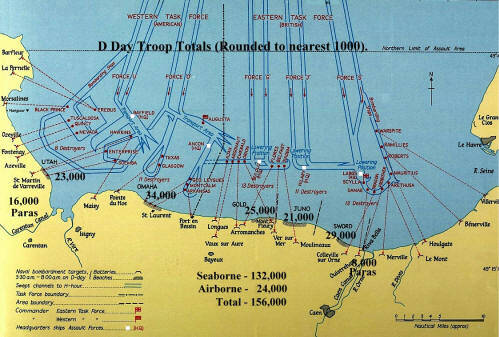Lugar enlisted into the U.S. Navy as a seaman at 17 years old on April 8, 1943 in Wilkes-Barre, Pennsylvania. Throughout the war, the navy grew rapidly.
Navy Boot Camps
Enlisted men who attended navy boot camp were referred to as Boots. Upon entering the boot camp, they received shots and a buzz haircut. They were distributed their uniforms and other gear they would need throughout the camp including the Bluejackets' Manual. This manual included everything a Boot would need to know to become an adequate sailor.
Boot camp training lasted around six weeks, but mainly depended on the Navy's need for men at the moment. Boots experienced long, 10-hour days consisting of marching, calisthenics, scrubbing clothes, rifle-over-your-head drills, pulling oars in a boat, loading heavy shells into guns, and other training activities. These camps put together thousands of sailors who were well enough trained to go out to sea and aid in winning the war.

Pictured is a graduating picture of naval boot camp. When a boot graduated he became a new sailor and sent out for their first assignment and begin their cruise with the navy.

A total of seven naval boot camps existed across the nation. It is not known where Lugar attended basic training or follow-up training. However, there is some belief he spent a part of his training in the Sampson Naval Training Station , NY and at the Naval Amphibious Training Base at Fort Pierce, FL.
Battle of Midway
Lasting from June 3, 1942 to June 6, 1942, a significant naval battle between Japan and the United States transpired. Japanese Admiral, Isoruku Yamamoto, decided to attempt to capture the U.S. base on Midway Island by engaging the numerically inferior U.S. Navy. However U.S. intelligence broke the Japanese's Naval code and successfully obtained their plan of attack. The U.S. brought up more than one-hundred land-based aircraft and three aircraft carriers. On the date of June 3, 1942, the U.S. began bombing Japan's carrier force. After heavy losses and the inability to match the U.S's air power, the Japanese surrendered, abandoning efforts to land on Midway. This event marked a strategic naval victory and the turning point of the war between the two countries.

The USS Lexington was the oldest working carrier in the U.S. Navy. She set more records than any other Essex Class carrier in the history of naval aviation.
General Navy Equipment
The U.S. Navy consisted of thousands of ships, battleships, and naval aviation. Throughout the war, the U.S. produced 28 airplane carriers 23 battleships, 72 cruisers, 377 destroyers, 420 convoy escorts, 232 submarines, and 33,993,230 merchant tonnage.
American admirals also adjusted their naval warfare to their advantage with the use of new technology. They invented new weapons including landing ships, which would carry tanks and land them directly on assault beaches. The took old weapon systems and upgraded them continuously. For example, obsolete airplanes received more powerful engines and more sensitive radar systems.
Omaha Beach
Lugar was a member of Advanced Amphibious Base Forces for the Navy. To prepare for the Battle of Normandy he was assigned to the Advanced Amphibious Base in Weymouth, England. Here the landing aircraft crew went through more advanced training conditions that were designed to closely simulate the conditions expected at Normandy.
Lugar was believed to be a crew member on one of the hundreds of landing crafts that were bringing the soldiers to Omaha Beach. His landing craft was a part of Force O and departed from England on June 5, 1944. By 2:30 am on June 6, 1944, the U.S. Navy dropped anchor about 12 miles from the coast of Normandy. The naval and aerial bombing of Omaha Beach began around 5:30 am. As they approached the beach, heavy fire from German forces was underway. Bombardment included the firing of machine guns, small arms, and artillery fire, which increased as they approached the beach.
Throughout the events, S1C Lugar was killed in action on June 6, 1944. The exact circumstances of the cause of is death are undetermined, but he was an early casualty of the Normandy landing. He was initially buried at Saint Laurent #3505 (Plot G, Row 7, Grave 139). However his permanent resting place is the Normandy American Cemetery (Plot D, Row 15, Grave 31).

U.S. Navy ships on June 6, 1944 during the Normandy Invasion. The USS Augusta is off the French Invasion Coast, heading toward Omaha Beach, during landing operation. Smaller landing crafts are also speeding toward shore.

Map of the troops at Battle of Normandy
Create Your Own Website With Webador